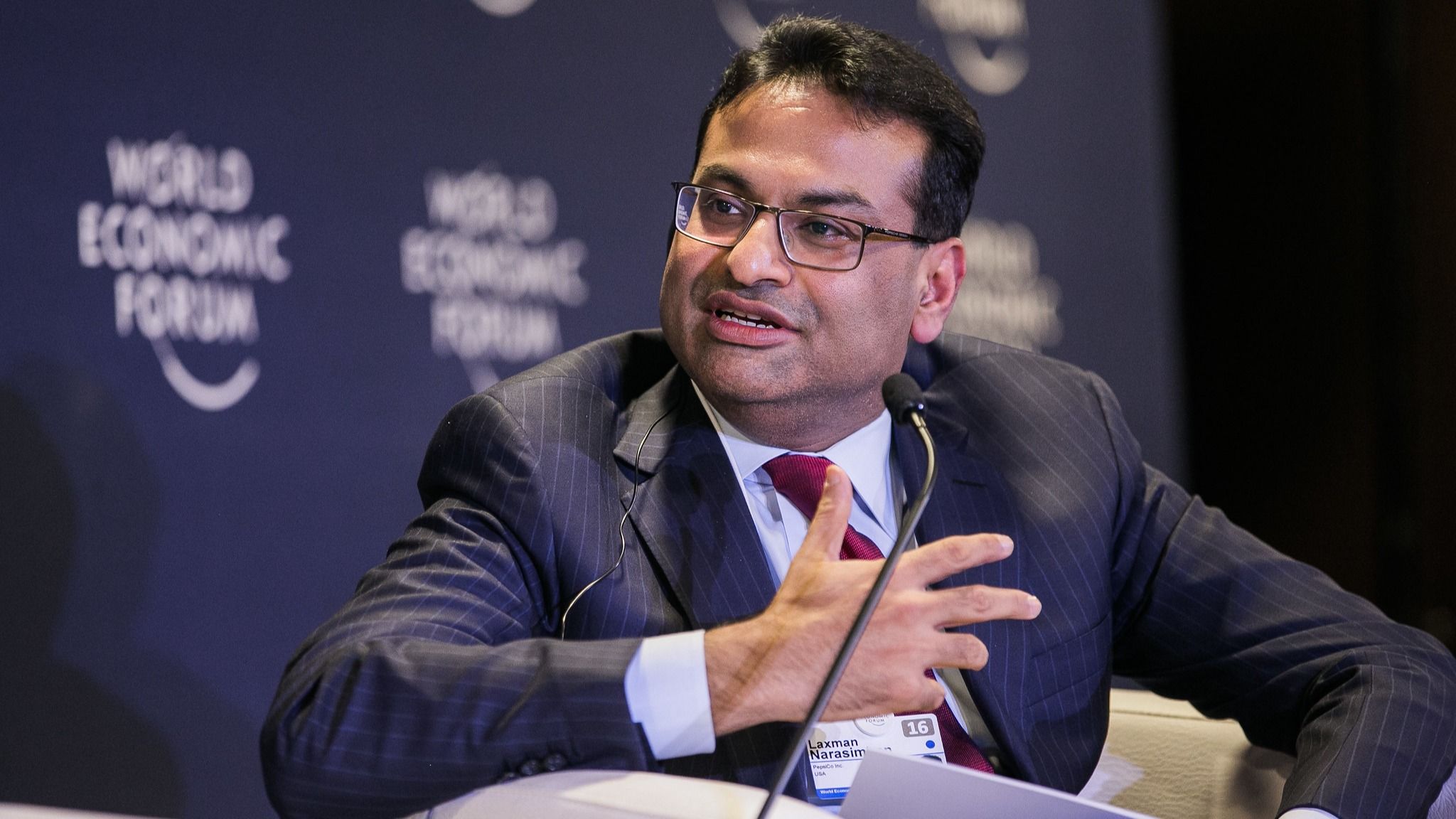Laxman Narasimhan’s Background and Career Trajectory

Laxman Narasimhan, the current CEO of Starbucks, is a seasoned business leader with a distinguished career spanning over two decades. His journey is marked by strategic leadership, a global perspective, and a deep understanding of consumer-centric businesses.
Early Life and Education
Narasimhan was born and raised in India. He earned a Bachelor of Science degree in Mechanical Engineering from the University of Madras and then pursued his Master of Science in Chemical Engineering from the University of Illinois at Urbana-Champaign. He further honed his business acumen by obtaining an MBA from the Wharton School of the University of Pennsylvania. This combination of technical and business education laid the foundation for his future success.
Early Career and Professional Journey
Narasimhan’s early career was characterized by his commitment to global business and his ability to navigate diverse markets. He began his professional journey at PepsiCo, where he held various leadership roles in international markets, including the Middle East, Africa, and Asia. He then joined Reckitt Benckiser, a global consumer goods company, and served as the CEO of its global health division. This experience provided him with invaluable insights into managing complex global operations and driving growth in competitive markets.
Key Leadership Roles and Accomplishments
Narasimhan’s leadership roles at Reckitt Benckiser showcased his strategic thinking and ability to lead large-scale organizations. He was instrumental in transforming the company’s global health division, spearheading initiatives to expand its product portfolio and market reach. He also played a crucial role in driving innovation and improving operational efficiency. His accomplishments at Reckitt Benckiser highlighted his expertise in leading global businesses, fostering innovation, and driving growth.
Skills and Strengths
Narasimhan’s appointment as CEO of Starbucks was driven by his unique blend of skills and strengths. His global experience, combined with his deep understanding of consumer-centric businesses, made him an ideal candidate to lead the coffee giant. His proven track record in driving growth, managing complex organizations, and fostering innovation were key factors in his selection. He is known for his strategic vision, analytical capabilities, and ability to inspire and motivate teams.
Starbucks Under Narasimhan’s Leadership

Since assuming the CEO role in April 2022, Laxman Narasimhan has brought a fresh perspective to Starbucks, focusing on a number of key strategic initiatives aimed at enhancing the customer experience, driving financial performance, and strengthening the brand’s image.
Starbucks’ Financial Performance Under Narasimhan
Narasimhan’s leadership has been marked by a focus on driving financial performance. He has implemented several initiatives to achieve this goal, including a renewed focus on cost efficiency, expansion into new markets, and a drive to increase digital sales.
- Cost Efficiency: Narasimhan has focused on reducing costs by streamlining operations and improving supply chain efficiency. This has resulted in improved margins and increased profitability.
- Market Expansion: Narasimhan has continued Starbucks’ expansion into new markets, particularly in Asia and the Middle East. This has contributed to revenue growth and increased brand awareness globally.
- Digital Sales: Narasimhan has made digital sales a key focus, investing in mobile ordering, delivery services, and loyalty programs. This has resulted in a significant increase in digital sales, which have become a major revenue driver for Starbucks.
Starbucks’ Brand Image Under Narasimhan
Narasimhan’s leadership has also been focused on strengthening Starbucks’ brand image. He has emphasized the importance of ethical sourcing, sustainability, and social responsibility.
- Ethical Sourcing: Narasimhan has continued Starbucks’ commitment to ethical sourcing, ensuring that its coffee beans are sourced sustainably and ethically. This has helped to maintain the brand’s reputation for social responsibility.
- Sustainability: Narasimhan has also made sustainability a key focus, investing in initiatives to reduce Starbucks’ environmental footprint. This includes efforts to reduce waste, conserve water, and use renewable energy.
- Social Responsibility: Narasimhan has emphasized the importance of social responsibility, supporting community initiatives and programs aimed at promoting education and economic opportunity.
Starbucks’ Customer Experience Under Narasimhan
Narasimhan has placed a strong emphasis on improving the customer experience. He has implemented initiatives to enhance the in-store experience, improve customer service, and personalize the Starbucks experience.
- In-Store Experience: Narasimhan has invested in upgrading Starbucks stores, creating a more inviting and comfortable environment for customers. This includes introducing new store designs, improving seating arrangements, and providing more amenities.
- Customer Service: Narasimhan has focused on improving customer service, training employees to provide a more personalized and welcoming experience. This has involved implementing new training programs and providing employees with the tools and resources they need to excel in their roles.
- Personalized Experience: Narasimhan has implemented initiatives to personalize the Starbucks experience, using data to understand customer preferences and provide tailored recommendations. This includes offering personalized rewards, suggesting new products, and providing customized offers.
Narasimhan’s Leadership Style Compared to Kevin Johnson
Narasimhan’s leadership style differs from that of his predecessor, Kevin Johnson, in several key areas. While Johnson was known for his operational focus and efficiency, Narasimhan has emphasized a more strategic and customer-centric approach.
- Strategic Focus: Narasimhan has a more strategic focus, prioritizing long-term growth and innovation over short-term results. This is evident in his investments in new technologies, expansion into new markets, and focus on building a sustainable and ethical brand.
- Customer-Centric Approach: Narasimhan has adopted a more customer-centric approach, emphasizing the importance of providing a personalized and engaging experience. This is reflected in his investments in digital sales, personalized rewards programs, and store upgrades.
- Innovation and Growth: Narasimhan is known for his focus on innovation and growth. He has invested in new technologies, such as mobile ordering and delivery, and is actively exploring new markets and opportunities for expansion.
Challenges and Opportunities Facing Starbucks: Starbucks Ceo Laxman Narasimhan

Starbucks, despite its global dominance, faces a dynamic and competitive landscape, navigating shifting consumer preferences, economic fluctuations, and the emergence of new rivals. Understanding these challenges and capitalizing on emerging opportunities is crucial for the company’s continued success.
Challenges Facing Starbucks
The current market landscape presents several challenges for Starbucks, including:
- Intense Competition: The coffee industry is increasingly competitive, with established players like Dunkin’ Donuts, McDonald’s, and local coffee shops vying for market share. Additionally, the rise of specialty coffee brands and the growing popularity of home brewing present significant challenges.
- Economic Fluctuations: Economic downturns can impact consumer spending, leading to reduced visits to coffee shops and a shift towards more affordable options.
- Changing Consumer Preferences: Consumers are increasingly seeking healthier and more sustainable options, driving demand for plant-based alternatives, ethically sourced coffee, and environmentally friendly practices.
- Technological Disruption: The rise of mobile ordering and delivery platforms, as well as the increasing use of technology for personalization and loyalty programs, require Starbucks to adapt its operations and customer engagement strategies.
Opportunities for Starbucks, Starbucks ceo laxman narasimhan
Despite the challenges, Starbucks has numerous opportunities to expand its market share, enhance customer loyalty, and innovate in the coffee industry. These include:
- Expanding into New Markets: Starbucks can continue to expand its global footprint by entering new markets with high growth potential, such as emerging economies in Asia and Africa.
- Leveraging Digital Technology: Starbucks can enhance its customer experience by investing in mobile ordering and delivery, personalized recommendations, and data-driven insights to better understand customer preferences.
- Focus on Sustainability: Consumers are increasingly conscious of sustainability, presenting an opportunity for Starbucks to further invest in ethically sourced coffee, reduce its environmental footprint, and promote responsible practices throughout its supply chain.
- Developing New Products and Experiences: Starbucks can innovate by introducing new beverages, food items, and unique customer experiences, catering to evolving tastes and preferences. This could include expanding its plant-based offerings, introducing new coffee blends, and creating immersive in-store experiences.
Strategies to Address Challenges and Opportunities
Starbucks can address these challenges and capitalize on opportunities through strategic initiatives:
| Challenge | Opportunity | Strategy |
|---|---|---|
| Intense Competition | Expanding into New Markets | Invest in market research to identify high-growth potential markets and develop tailored strategies for each region. |
| Economic Fluctuations | Leveraging Digital Technology | Optimize pricing strategies to remain competitive while maintaining profitability, and offer value-driven promotions to attract price-sensitive customers. |
| Changing Consumer Preferences | Focus on Sustainability | Increase the availability of plant-based options, promote ethically sourced coffee, and implement eco-friendly practices across its operations. |
| Technological Disruption | Developing New Products and Experiences | Invest in technology to enhance customer experience, personalize offerings, and optimize operations for efficiency. |
Starbucks ceo laxman narasimhan – Laxman Narasimhan, the new CEO of Starbucks, faces the daunting task of revitalizing the coffee giant. His journey, however, is not without precedent. One can only ponder the compensation packages of other prominent figures in the corporate world, like the reported brian niccol salary , and wonder if such figures are reflective of the current economic climate and the weight of responsibility that comes with such positions.
Perhaps Narasimhan will chart a new course, one that prioritizes employee well-being and ethical practices, in a world where corporate leadership is increasingly under scrutiny.
Laxman Narasimhan, the new CEO of Starbucks, faces the challenge of navigating a world where coffee culture is evolving rapidly. He might find inspiration in the work of Brian Niccol, a director whose films explore the intersection of technology and human nature, as seen in brian niccol wikipedia.
Niccol’s vision of the future, often portrayed as both utopian and dystopian, might offer Narasimhan a lens through which to view the future of Starbucks and its place within a rapidly changing world.
